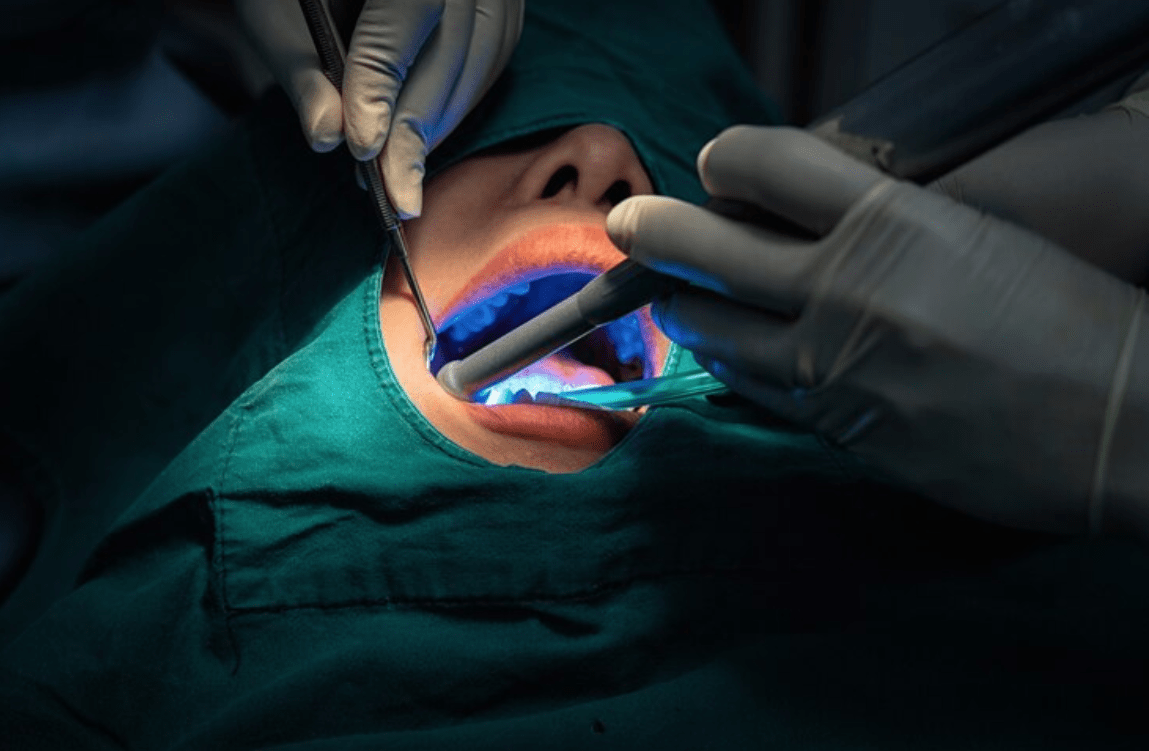Laser dentistry is used to treat dental patients as it is very easy and effective. There is no doubt several advantages of laser dentistry that add to its usefulness.
Laser dentistry refers to the usage of lasers to treat several different dental conditions. It became rather commercially used in clinical dental practice for procedures that involve tooth tissue in 1989.
Laser dentistry does offer a more comfortable treatment option for several dental procedures that tend to involve hard or soft tissue as compared to drills and other non-laser tools.
LASER implies “light amplification by the stimulated emission of radiation.” The instrument does create light energy in a very narrow as well as focused beam. This laser light does produce a reaction when it hits tissue, thus allowing it to remove or shape the tissue.
Common hard tissue procedures include:
- Cavity detection – Lasers can indeed detect cavities early by finding evidence of tooth decay.
- Tooth preparations cum dental fillings – Local anesthesia as well as traditional drills is often not required with laser treatments. Lasers can kill bacteria in a cavity, which can help in the long-term health of a tooth.
- Treating tooth sensitivity – Teeth that do appear to have sensitivity to hot cum cold can be treated with dental lasers that seal tubules on one’s tooth’s root.
Common soft tissue procedures include:
- Treating a “gummy smile” – Lasers are used to reshape gum tissue associated with a “gummy smile,” in which the gums’ length does cover much of one’s tooth.
- Crown lengthening – This procedure reshapes both gum tissue as well as bone for healthier tooth structure, which does help with placing restorations on the person’s teeth.
- Treating tongue frenulum attachment – Those with a thick or perhaps tight frenulum (the fold of skin under the front part of the tongue that anchors to the mouth floor) can benefit from a laser frenectomy. This treatment tends to enable children whose restricted frenulum causes them to be tongue-tied, have difficulty breastfeeding, or have a speech impediment.
- Removing soft tissue folds – Lasers can rather remove soft tissue folds from ill-fitting dentures without any pain or sutures.

Other laser procedures include:
- Viewing tissues – Optical coherence tomography allows a doctor to safely see inside a tooth or his or her gum tissue.
- Removing benign tumors – Lasers can of course remove tumors from the palate, gums, as well as sides of the lips and cheeks via a pain- and suture-free method.
- Treating obstructive sleep apnea – Lasers can rather reshape the throat and also relieve associated breathing problems when sleep apnea is caused by tissue overgrowth in a person’s throat.
- TMJ (temporomandibular joint) treatment – Lasers can no doubt help reduce pain as well as inflammation in the joint.
- Nerve regeneration – Lasers can also aid in regenerating damaged blood vessels, nerves, and scars.
- Treating cold sores – Lasers can no doubt minimize healing time and also reduce pain from cold sores.
- Teeth whitening –Lasers speed up the bleaching process during teeth-whitening sessions.
Advantages of laser dentistry over other methods
- There is less need for sutures with soft tissue lasers.
- Bleeding is sort of minimized in treated soft tissues, as the laser does promote blood clotting.
- With few procedures, anesthesia is unnecessary.
- The chance of bacterial infections is considered to be lower as the laser sterilizes the area.
- Wounds can of course heal faster, and tissue can regenerate.
- The procedures may involve less damage to the surrounding tissues.
Conclusion
Laser dentistry is a sophisticated approach to treating dental eat issues.


